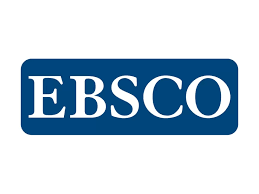Incidence of Cytomegalovirus disease in kidney transplant recipients receiving Everolimus and reduced Tacrolimus doses: A cohort retrospective analysis
DOI:
https://doi.org/10.53855/bjt.v24i3.419Palabras clave:
Cytomegalovirus, Kidney Transplant, mTOR inhibitorsResumen
Introduction: Cytomegalovirus (CMV) is the most common viral pathogen occurring in postrenal transplantation. CMV infection usually develops during the first few months after transplantation. The success of CMV prophylaxis with antivirals has resulted in a decrease in the incidence of CMV infection. However, CMV remains a significant pathogen, associated with allograft rejection and loss, mortality, interstitial fibrosis and tubular atrophy (IF/TA) in protocol biopsies, and increased post-transplant costs. Purpose: To determine the incidence of cytomegalovirus disease in kidney transplant recipients receiving Everolimus and reduced Tacrolimus doses. Material and Methods: All low immunological risk patients, >18 years old whom received kidney transplantation at Santa Casa de Misericórdia de Juiz de Fora between January 2013 and February 2017 were retrospectively assessed. The first group received induction therapy with Basiliximab, and the post-operative maintenance regimen included Tacrolimus, Mycophenolic acid and Prednisone (BAS/MPS), and the second group received Polyclonal antilymphocyte globulins (2,25mg/kg) as induction therapy, and then low dose of Tacrolimus (2mg/10kg/day), Everolimus and Prednisone as maintenance regimen (r-ATG/EVR). None of the patients received pharmacological prophylaxis or preemptive therapy against CMV. Results: Patients receiving EVR showed a lower incidence of CMV when compared to those receiving MPS (4.2% x 17.5%, p=0.005). There was an important difference in the time of hospitalization to treat CMV disease. Patients of the MPS stayed hospitalized for about 20 days more than the EVR group (p=0.005). There was no difference as to the incidence of rejection, delayed graft function or graft survival. Conclusion: Results from this trial conducted in low immunological risk kidney transplant recipients receiving no CMV prophylaxis demonstrated that EVR was associated to a decrease in CMV disease incidence when compared to MPS. These data suggest that kidney transplant recipients receiving EVR may not need CMV prophylaxis.
Descargas
Descargas
Publicado
Versiones
- 2021-10-20 (3)
- 2021-10-19 (2)
- 2021-10-18 (1)
Cómo citar
Número
Sección
Licencia
Derechos de autor 2021 Brazilian Journal of Transplantation

Esta obra está bajo una licencia internacional Creative Commons Atribución 4.0.














